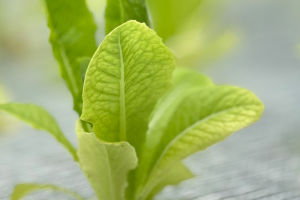
Taste Buds Surprise

Bayberry is a small fruit that grows in warm climates and comes in two colors: red and black. Both colors of bayberry have their unique characteristics and tastes, and how to select bayberries requires some skills.
In this article, we’ll take an in-depth look at bayberries and tips on selecting bayberries to help you better enjoy this delicious fruit.
Introduction to bayberry
Bayberry is a very popular fruit that is grown in many places. They usually ripen in the summer and have a unique sweet taste that makes them one of the favorite fruits for many people.
First, let’s learn about red bayberry. Red bayberries are usually slightly larger than black bayberries and have a bright red color. The pulp of this kind of bayberry is juicy, sweet sour, and refreshing. It is a delicious way to relieve the heat in the hot summer weather. Red bayberry is most commonly eaten raw, but can also be used to make juice, jam, or fruit salad.
Related
 Cherry tomatoes and tomatoes are common ingredients on the table. They have many similarities in color, shape, taste, uses, etc.
Cherry tomatoes and tomatoes are common ingredients on the table. They have many similarities in color, shape, taste, uses, etc.
 The creation of the teddy bear is associated with the former President of the United States.
The creation of the teddy bear is associated with the former President of the United States.
 People around the world celebrate Earth Day, a day that aims to raise awareness and action for the planet’s environmental protection.
People around the world celebrate Earth Day, a day that aims to raise awareness and action for the planet’s environmental protection.
 Indoor greening enhances air quality, life quality, and natural connections, but choosing the right houseplants is key.
Indoor greening enhances air quality, life quality, and natural connections, but choosing the right houseplants is key.
 The key to successful vegetable farming.
The key to successful vegetable farming.
 Painters must always take care to protect their own health and safety.
Painters must always take care to protect their own health and safety.
The black bayberry, as the name suggests, has a deep purple to almost jet-black appearance. It has relatively less pulp, but is richer and has a sweeter flavor with some light sourness. Black bayberry is often used to make jams, pastries, ice cream, and other desserts, and its unique flavor makes it a favorite in the gourmet world.

Tips for selecting Bayberry
Selecting bayberries requires some tips to ensure you're buying fresh, ripe, and delicious fruit. Here are some helpful tips:
1. Color and appearance: First, observe the color and appearance of the bayberry. Whether it is red bayberry or black bayberry, it should have a bright and uniform color with no obvious differences in shades or spots. The peel should be smooth with no visible scratches or damage.
2. Touch: Touch the bayberry gently, it should have a certain elasticity, but it should not be too hard or too soft. Bayberries that are too hard may not be fully ripe, while bayberries that are too soft may be overripe.
3. Aroma: Smell the bayberries. Ripe bayberries should have a rich, sweet aroma. If there's no fragrance or an unusual smell, that could be a sign that it's not fresh.
4. Fruit stem: Check the fruit stem part. If the fruit stem is too wilted or brown, it may be a sign that the bayberry is not fresh. Fresh bayberry stems should remain green.
5. Size: Choose the appropriate size of bayberry. Generally speaking, larger bayberries may be juicier but are also more likely to be overripe. Choose a size based on your taste preference.
6. Where to buy: Try to buy bayberries from reliable markets, supermarkets, or fruit and vegetable stalls to ensure freshness and quality.
7. Buy seasonally: Understand the seasonality of bayberries, which are usually most abundant and delicious in summer and early autumn.
In general, when choosing bayberries, you need to consider factors such as color, appearance, touch, fragrance, and fruit stems to ensure that you buy the best quality bayberries.
As a delicious fruit, bayberry can not only be eaten alone but can also be used to make various foods and drinks. Whether it is red bayberry or black bayberry, both have unique flavors and can be chosen according to personal taste.
Hopefully, the selection tips mentioned in this article will help you find the best bayberries on the market, allowing you to enjoy the delicious taste and nutrients that this delightful fruit has to offer. Whether it is the refreshing red bayberry or the rich black bayberry, it can surprise your taste buds.